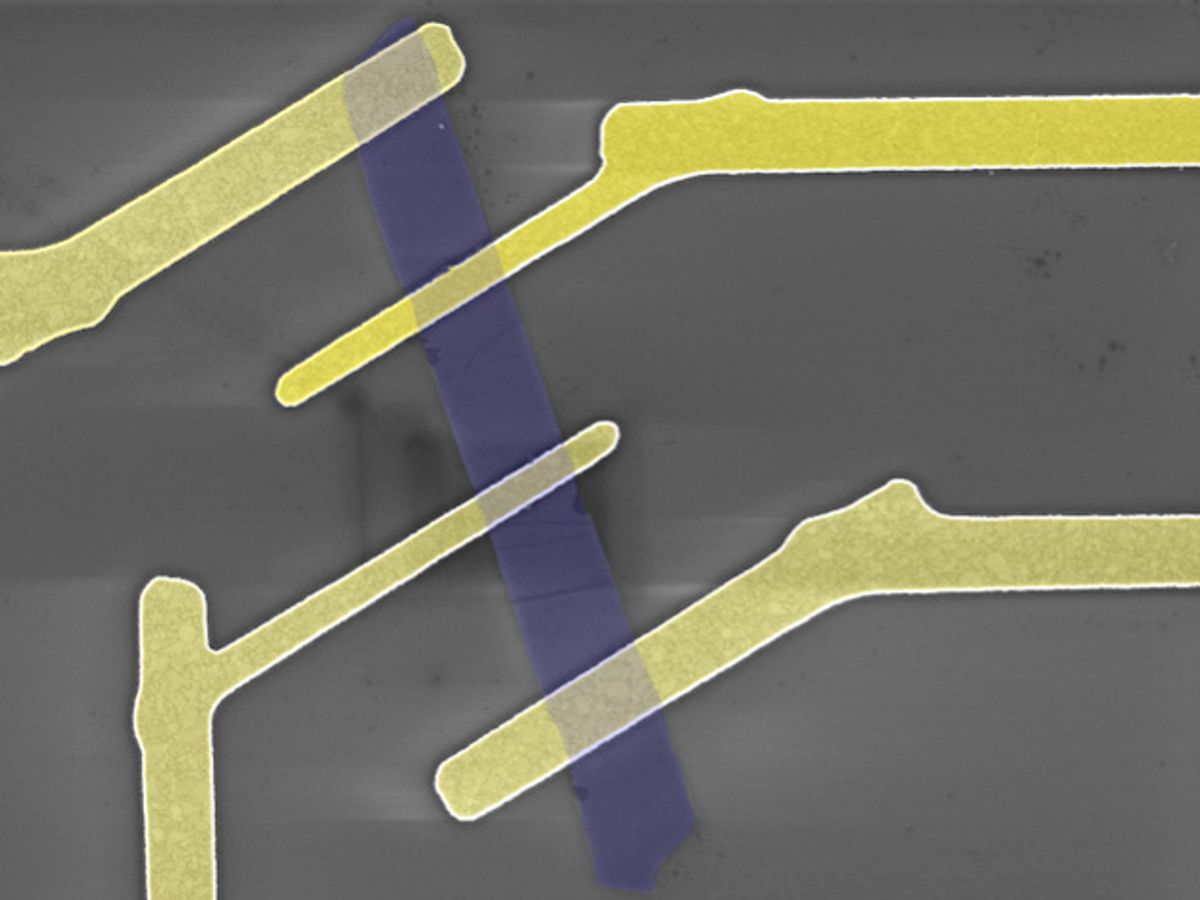Electronics and sensors that relay information from inside jet engines and deep oil and gas wells could improve efficiency and save millions of dollars. Researchers have been looking for cost-effective electronic circuits that would work in those extreme-temperature environments.
Now a team from the University of Calfornia at Riverside and Rensselaer Polytechnic Institute has found that the two-dimensional electronic material molybdenum disulfide (MoS2) is a promising candidate for high-temperature transistors. They have made MoS2 thin-film transistors that work at temperatures exceeding 220 °C and remain stable over two months of operation. The results are published in the Journal of Applied Physics.
Conventional silicon logic chips typically break down past 350 °C. Though researchers are pursuing silicon carbide and gallium nitride circuits as an alternative for extreme environments, these materials “hold promise for extended high-temperature operation, [but] are still not cost-effective for high volume applications," said Alexander Balandin, a professor of electrical and computer engineering at UCR, in a press release.
Molybdenum disulfide, which is found as the mineral molybdenite, is an abundant, naturally occurring material. It can be synthesized by chemical vapor deposition and could also be made into solutions that serve as inks for printable electronics. Researchers have been pursuing its development, along with graphene, as the material of choice for post-silicon electronics.
The reason MoS2 transistors work well at high temperatures is because of the material’s wide bandgap of 1.9 electron volts (silicon’s is 1.1 eV). That wide bandgap keeps high temperatures from driving electrons into the conduction band, causing an undesired flow of current.
Transistors made of silicon carbide—which has an even wider bandgap, in excess 3 eV—can work at over 500 °C, but those devices have yet to be tested for longevity. A University of Utah team recently made plasma transistors for nuclear reactor electronics that function at temperatures as high as 790 °C, but those would be impractical and expensive for other applications.
To be competitive with silicon and silicon carbide, Balandin and his team will have to show that MoS2 transistors work at even higher temperatures. One challenge with making transistors that are resistant to extreme heat is designing other components (chip packaging, interconnect metals, and contacts, for example) that can survive the harsh environment.
Prachi Patel is a freelance journalist based in Pittsburgh. She writes about energy, biotechnology, materials science, nanotechnology, and computing.



